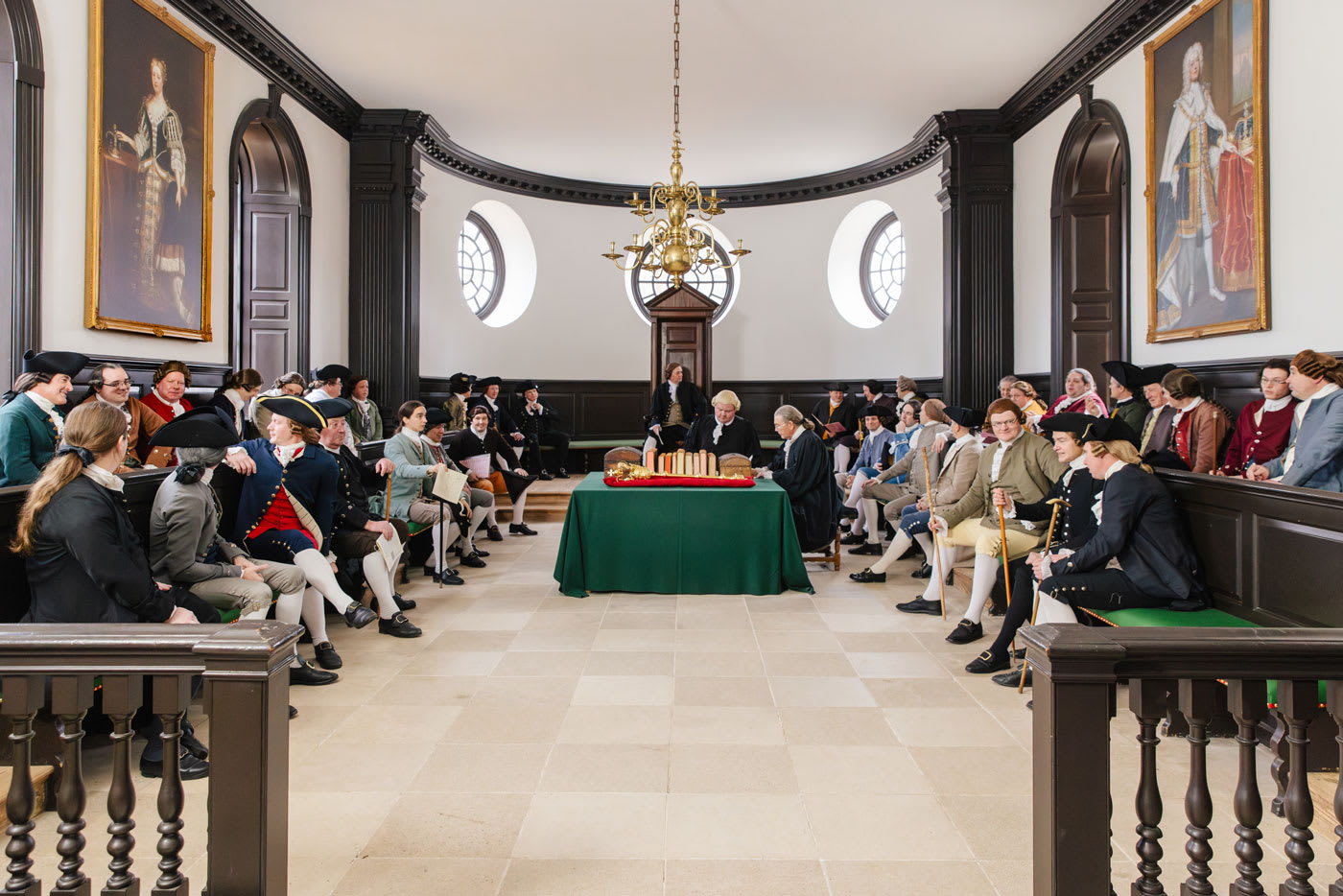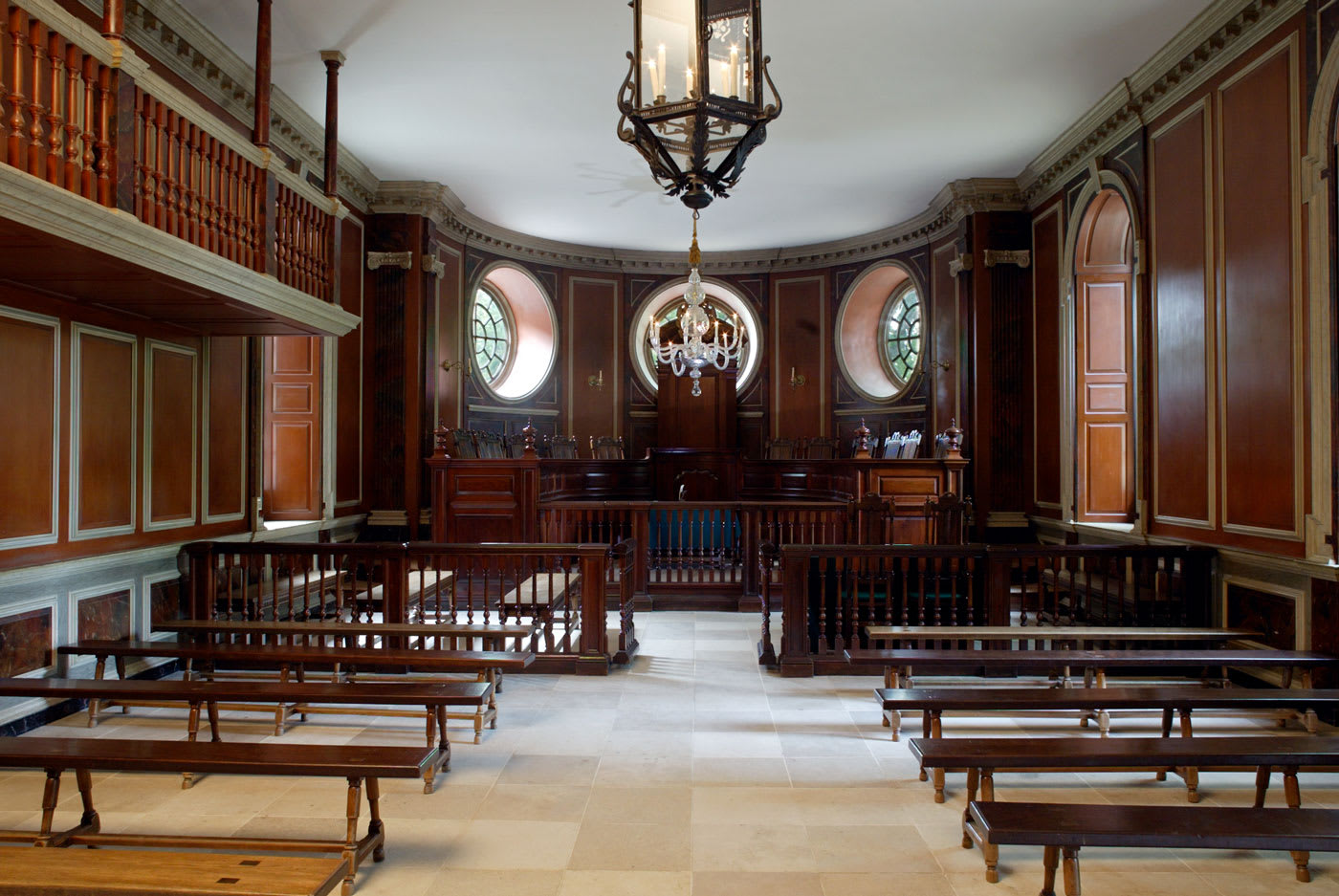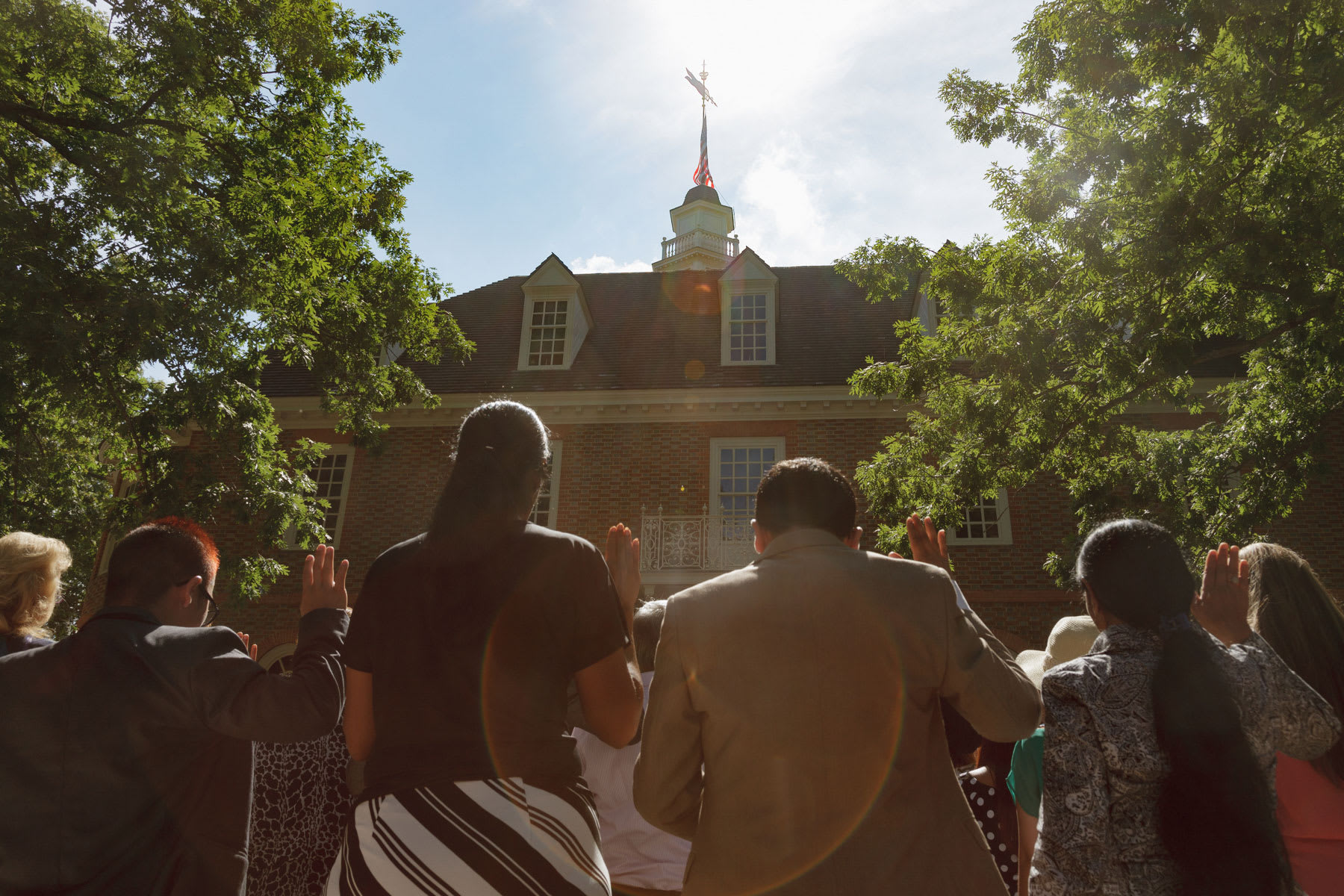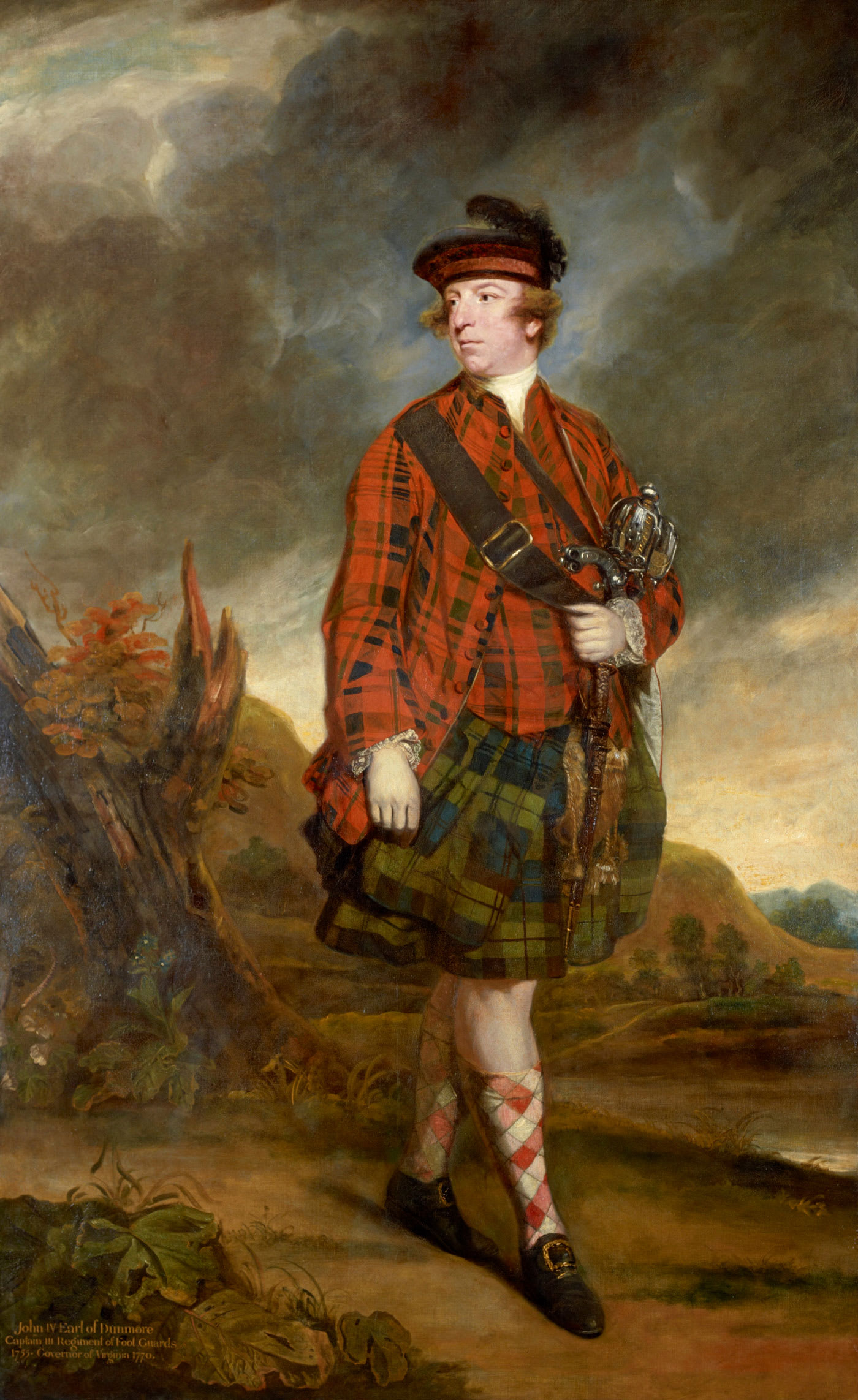Closed currently
-
Monday
9:00 a.m. - 5:00 p.m.
-
Tuesday
9:00 a.m. - 5:00 p.m.
-
Wednesday
9:00 a.m. - 5:00 p.m.
-
Thursday
9:00 a.m. - 5:00 p.m.
-
Friday
9:00 a.m. - 5:00 p.m.
-
Saturday
9:00 a.m. - 5:00 p.m.
-
Sunday
9:00 a.m. - 5:00 p.m.
Williamsburg’s Capitol was the center of British authority in Virginia for most of the eighteenth century. It was where the people of Virginia passed laws, debated revolutionary ideas, appeared in court, and pled for emancipation. Today, you can visit the Capitol in Williamsburg for daily tours. If you’re not in Williamsburg, view our virtual tour of the building.
Building and Rebuilding the Capitol
Fire burns through the story of Virginia’s colonial Capitol. On Halloween 1698, the Virginia statehouse in Jamestown, the previous capital city, went up in flames. It was the fourth time that fire had evicted Jamestown’s legislators.1 They decided to move the capital city to Williamsburg and set about constructing a Capitol building. It was completed in 1705.
For obvious reasons, they worried that the new building would burn down. Until 1723, when they realized that dampness was ruining the colony’s paper records, the building had no chimneys or fireplaces.2 According to William & Mary professor Hugh Jones, the threat of fire caused the government to prohibit “the Use of Fire, Candles, and Tobacco” in the Capitol.3 But if such a moratorium existed, it was not obeyed. Candles and other flames were widely used in the building.4 Like its predecessor, it burned to the ground in 1747.
Go deeper. Did you know that Benjamin Franklin wrote a humorous poem about the destruction of Virginia’s Capitol?

Reconstructed on the same site, Williamsburg’s second Capitol remained in use until 1779, when the state government moved to Richmond. The Capitol building stood until 1832, when it also fell to flames. Nearly a century later, Colonial Williamsburg again reconstructed the Capitol on its old foundations, based on the design of the Capitol building that stood from 1705 until 1747. 5
House of Burgesses
The House of Burgesses was the lower branch of colonial Virginia’s General Assembly, elected by property-owning voters throughout Virginia. Having first met in Jamestown in 1619, the Burgesses gathered in the Williamsburg Capitol from 1705 until 1776. Many of Virginia’s leading revolutionaries, including Peyton Randolph, George Washington, Thomas Jefferson, and Patrick Henry, served as Burgesses.
In response to revolutionary agitation, Governor Dunmore dissolved the House of Burgesses in 1774, though he briefly called them together again the next year. Afterward, the delegates met elsewhere in a series of conventions. They reconvened in the Capitol on May 16, 1776, when a group of delegates to a Fifth Virginia Convention met briefly as Burgesses, without conducting any business. As Edmund Pendleton explained, they had decided “not to adjourn, but let that body die.”6 Shortly after, the Virginia Constitution of 1776 replaced the House of Burgesses with the House of Delegates, which has met ever since.

The Council and General Court

The Governor’s Council, whose members were appointed by the King or Queen, served as the upper house of the Virginia legislature. They considered legislation originating from the Burgesses, managed several aspects of colonial affairs, and advised the governor. This body was made up of the leading members of the colony’s wealthiest and most powerful families.
Along with the governor, the Council also acted as the colony’s highest civil and criminal court, known as the General Court. Though the General Court’s members were not usually lawyers, they had jurisdiction over all kinds of criminal, civil, and even religious disputes. In one memorable case in 1718, the court sentenced a group of Blackbeard’s pirates to hang.7 Unfortunately, most of the records from the Virginia General Court were destroyed in (you guessed it) a fire during the Civil War.
Slavery and Emancipation
The number of enslaved people living in Virginia expanded during the eighteenth century. By the time of the American Revolution, Williamsburg’s population was about half Black.8 Unsurprisingly, then, the history of the Capitol is intertwined with the colony’s enslaved population. The Virginia government raised funds for the first Capitol building partly by taxing the importation of enslaved people into Virginia.9 They also purchased “four Negro men” to work on the building project, to be sold when the project ended.10
During the decades when political leaders gathered at Williamsburg’s Capitol, much of their business related to enslaved and free Black people. Shortly after they first convened in the Capitol, the General Assembly passed “An act concerning Servants and Slaves,” which protected the rights of enslavers, enforced racial segregation, and provided greater control of enslaved populations. 11
Taking note of the growing number of free people of color in Virginia, the Assembly passed a law in 1723 that slowed down the emancipation process. Enslaved people would only be freed if they engaged in “meritorious services,” which would be judged by the governor and Council.12 As a result, the Council frequently heard emancipation appeals.13 Enslaved people likewise sometimes pled for freedom from the General Court. In 1772, for example, the Williamsburg attorney George Mason successfully sued for the freedom of a dozen enslaved people who were descendants of a free Native woman.14
American Revolution
Some of the most dramatic scenes of the American Revolution unfolded in the Capitol.
Richmond and Restoration
At the end of 1779, Virginia’s government moved to Richmond. It adjourned and departed the Williamsburg Capitol on December 24.20 The building was used in several ways afterward. The next year, lawyer George Wythe began to teach law at William & Mary, making him the first law professor in the United States. He held a “Moot Court,” or mock trial, with his law students in the old General Court Room of the Capitol building. Jefferson, who had instigated Wythe’s appointment, wrote to James Madison, “Wythe's school is numerous, they hold weekly Courts & Assemblies in the Capitol. The professors join in it, and the young men dispute with elegance, method & learning.” 21


The Capitol building subsequently served as a meeting place for the Court of Admiralty, a district court, a military hospital, and a grammar school. On April 10, 1832, fire destroyed the building. It was temporarily replaced with a “Female Academy,” but by the early twentieth century, the land lay empty but for a stone marker.
Between 1931 and 1934, Colonial Williamsburg rebuilt the old Capitol based on the design of the first Capitol that stood from 1705 to 1745 (because it was more well documented). It opened to the public on February 23, 1934. The next day, the General Assembly of Virginia convened for a commemorative session at the site.


Today, the Capitol is open for tours. Since 1976, it has also regularly hosted new American citizens in naturalization ceremonies. Though no real governing has happened at Williamsburg’s Capitol since 1779, its reconstruction in the Colonial Williamsburg Historic Area continues to inspire and educate visitors every day.
Explore Virtually
Learn More
SOURCES
- Warren M. Billings, A Little Parliament: The Virginia General Assembly in the Seventeenth Century (Richmond: Library of Virginia, 2004), 144.
- H. R. McIlwaine, ed., Journals of the House of burgesses of Virginia, 1712-1714, 1715, 1718, 1720-1722, 1723-1726 (Richmond: Colonial Press, 1912), 390.
- Hugh Jones, The present state of Virginia (New York: Joseph Sabin, 1865), 30.
- Howard Dearstyne, “Capitol Architectural Report, Block 8 Building 11,” Colonial Williamsburg Digital Library, p. 676–680; H. R. McIlwaine, ed., Journals of the House of burgesses of Virginia, 1702/3–1705, 1705–1706, 1710–1712 1702–1712 (Richmond: Colonial Press, 1912), 107.
- More detailed architectural plans are available for the first Capitol building, which shaped the choice to reconstruct that building. See Dearstyne, “Capitol Architectural Report,” 26–27.
- Edmund Pendleton, The letters and papers of Edmund Pendleton, 1734–1803 (Charlottesville: Virginia Historical Society, 1967), 176; Journals of the House of Burgesses of Virginia, 1773–1776, ed. John Pendleton Kennedy (Richmond: s.n. 1905), 283.
- Lloyd Haynes Williams, Pirates of Colonial Virginia (Richmond: Dietz Press, 1937), 115; Lyon Gardiner Tyler, Williamsburg, the Old Colonial Capital (Richmond: Whittet & Shepperson, 1907), 25.
- Michael L. Nicholls, “Aspects of the African American Experience in Eighteenth-Century Williamsburg and Norfolk,” Colonial Williamsburg Digital Library, 2.
- William Waller Hening, The statutes at large; being a collection of all the laws of Virginia, from the first session of the legislature, in the year 1619, vol. 3 (Philadelphia: Thomas Desilver, 1823), 193.
- “The Building of Williamsburg,” William and Mary College Quarterly Historical Magazine 10, no. 2 (Oct. 1901): 82–83.
- Hening, statutes at large, vol. 3, 447.
- William Waller Hening, The statutes at large; being a collection of all the laws of Virginia, from the first session of the legislature, in the year 1619, vol. 4 (Richmond: Franklin Press, 1820), 482.
- In 1769, for example, a free man of white and Black ancestry named Matthew Ashby sought freedom for his “faithful and diligent Wife” Ann Ashby and two children John and Mary. He had purchased them from their enslaver but could not officially emancipate them until the Council consented, which they agreed to do. Executive journals of the Council of colonial Virginia, vol. 6: June 20, 1754–May 3, 1775 (Richmond: Virginia State Library, 1966), 334–35.
- Gregory Ablavsky, “Making Indians ‘White’: The Judicial Abolition of Native Slavery in Revolutionary Virginia and Its Racial Legacy,” University of Pennsylvania Law Review 159, no. 5 (April 2011): 1458–1459. On freedom suits in Virginia, see “Freedom Suits,” dataset, Library of Virginia, Virginia Open Data Portal.
- William Wirt, Sketches of the Life and Character of Patrick Henry (Philadelphia: Desilver, Thomas & Co., 1836), 83. There were several different accounts of Henry’s speech. The so-called “Frenchman’s account” paints a somewhat less dramatic scene. See John A. Ragosta, “‘Caesar has his Brutus’: What Did Patrick Henry Really Say?” Virginia Magazine of History and Biography 126 (no. 3, 2018): 282–97.
- Virginia Gazette (Rind), Dec. 14, 1769, p. 2.
- Journals of the House of Burgesses, ed. Kennedy, 124.
- Journals of the House of Burgesses, ed. Kennedy, 132.
- Virginia Gazette (Purdie), May 17, 1776, page 3.
- Journal of the House of Delegates of the Commonwealth of Virginia (Richmond: Thomas W. White, 1827), 108.
- “From Thomas Jefferson to James Madison, 26 July 1780,” Founders Online, National Archives, https://founders.archives.gov/documents/Jefferson/01-03-02-0589; Robert M. Hughes, “William and Mary: The First American Law School,” The William and Mary College Quarterly Historical Magazine 2, no. 1 (Jan. 1922): 40–42.
Come Explore In Person
-
Historic Site: Courthouse
Participate in the proceedings of the colonial court.
CW Admission
-
Historic Site: Charlton's Coffeehouse
Exchange ideas while sampling authentic versions of historic “hot liquors”: coffee, tea, and chocolate.
CW Admission
Handicap Accessible
-
Historic Site: The Rockefellers' Bassett Hall
The Story Behind the Restoration
CW Admission
Handicap Accessible







